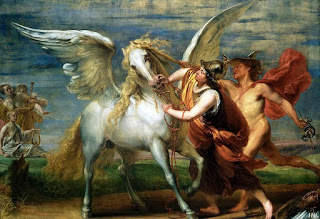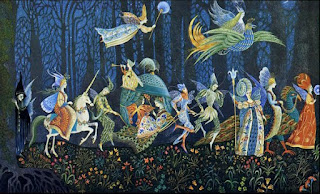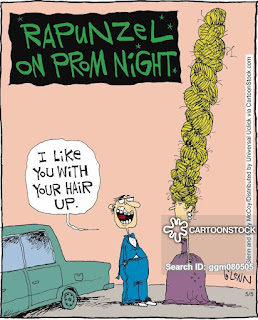Blog Entry 3
A fairy tale is something that enchants and excites us. Its influence not only occurs
during childhood but can span a lifetime. To define a fairy tale an
understanding of myths and legends comes into play.
 At the centre
of a myth is the Gods and an underlying moral to the story. Myths teach us
lessons through a tale involving Gods.
At the centre
of a myth is the Gods and an underlying moral to the story. Myths teach us
lessons through a tale involving Gods.
At the
centre of a legend is a miracle. The stories involve humans coming into contact
with the supernatural (miracle). They are more realistic in the way people react
and come into contact with the supernatural and skepticism can be a part of them.
At the
centre of a fairy tale is magic and fantasy. Miracles are also a vital part and
permeate the entire tale as there are more than one.
Max Lüthi describes fairy tales as “a work of art” and
identifies ten characteristics of a fairy tale.
Formulaic expressions- “Once
upon a time..” these suggest what has happened in the past will happen again.
They don’t stress the importance of the past but actually the idea of events recurring.
Lack of detail- little
description is given to the visuals in fairy tales this allows for clarity and
precision in the tales. It stresses the importance of what has been written or
told.
Isolation of characters-
characters complete the action alone and are distant from others in the tales.
This helps define the characters and creates strong impressions of them.
Extremes and contrasts- the
world portrayed in fairy tales is neatly fashioned and so everything has its
opposite and is black or white/good or evil.
Repetition- Adds to the
rigid nature of fairy tales as well as informing the timelessness of the world.
Symbols and motifs- Fairy
tales always have underlying messages and motifs and symbols allow for these messages
to be interpreted.
 Action driven- the lack
of description can also be put down to the importance of action over all else.
Action is what steers the tales and makes them what they are.
Action driven- the lack
of description can also be put down to the importance of action over all else.
Action is what steers the tales and makes them what they are.
Heroes return just in
time- emphasising the precision in the fairy tale. Also that every last moment
is used and everything works out in the end.
Need for clarity- at no
point in fairy tales are “if” or “perhaps” present. Everything happens for a
reason and ultimately adds to the story. This also can be seen in the objects
present in fairy tales as they are solid and clearly formed due to the neatly
fashioned world.
Happy ending- Good triumphs
in the end and after hardship there will be happiness.
All these aspects of
fairy tales enhance the imperishability of the fairy tale world. Without time
and the cessation of things we as readers are encouraged to feel as though there
is another way of viewing and experiencing life.
Sources for images:



Comments
Post a Comment